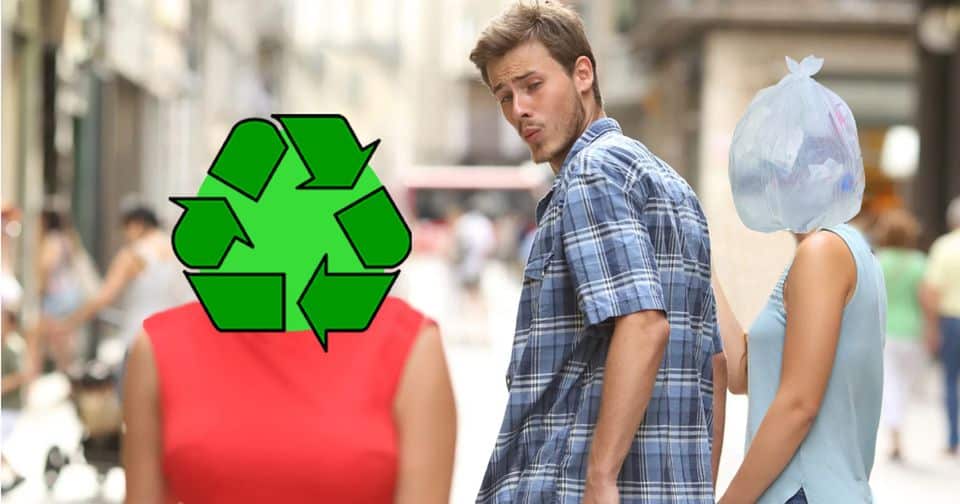





Thank You To These Sioux Falls BINfluencers for Helping Spread the Word!















WHAT GOES IN THE BIN
What Goes in the Sioux Falls Recycling Bin?
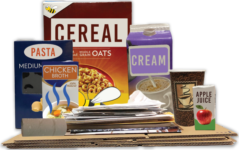
PAPER &
CARDBOARD
See Details
Examples: Paper, Paper Bags, Envelopes, Magazines, Junk Mail, Paper Cups, Cardboard Boxes, Pizza Boxes, Paper Egg Cartons, Paper Take-Out Containers, Cereal Boxes, Pasta Boxes, Pop Boxes, Milk and Juice Cartons, Bagged Shredded Paper*.
Instructions: Remove metal or plastic clips, bindings, bubble wrap, styrofoam before recycling. Staples and plastic windows are OK.
*Shredded paper is ONLY exception to No Bags rule – Place in clear bag and tie shut.
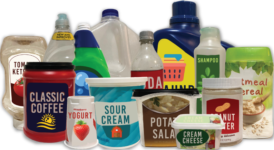
PLASTIC BOTTLES,
TUBS, & JUGS
See Details
Bottle Examples: Water and Soda Bottles, Cleaning Spray Bottles (remove the nozzle), Shampoo Bottles, Lotion and Hand-Soap Bottles (remove the pump), Dish Soap Bottles, Detergent Bottles, Coffee Creamer Bottles, Condiment Bottles like Salad Dressing, Ketchup, etc.
Tub Examples: Margarine Tubs, Yogurt Tubs, Cool Whip Tubs, Tupperware Tubs, Sour Cream Tubs, Ice Cream Tubs, Cat Litter Tubs, Peanut Butter Tubs and Jars, Cottage Cheese Tubs, etc.
Jug and Bucket Examples: Milk Jugs, Detergent Jugs, Juice Jugs, Ice Cream Buckets, Kitty Litter Buckets, 5 Gallon Buckets, etc.
Instructions: Empty liquid and food contents. If the cap is just plastic (not a pump or nozzle), place back on if completely empty. IF chemicals, please TRIPLE RINSE and keep lid off.
NUMBERS DO NOT MATTER!
Learn more about Plastic Recycling
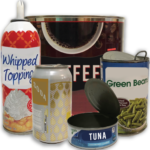
METAL CANS
See Details
Examples: Tin, Steel and Aluminum Cans, Soup Cans, Tuna Cans, Soda Cans, Beer Cans, Vegetable Cans, Aerosol Cans (if completely empty), Aluminum Foil and Trays*.
Instructions: Empty all liquid and food contents. Place lid (if metal) back on or set in container. Labels are OK.
*For aluminum foil or trays, make sure they are clean and roll into a ball.
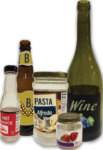
GLASS BOTTLES & JARS
See Details
Examples: Glass Jam Jars, Pickle Jars, Pasta Sauce Jars, Baby Food Jars, Olive Oil Bottles, Beer Bottles, Wine Bottles, Ketchup Bottles, etc.
ALL GLASS COLORS ARE OK.
Instructions: Empty all liquid and food contents and place metal lid back on if empty.
GET THE GUIDE


BEYOND THE BIN
Not Everything Belongs in the Bin…
Many waste diversion programs work together to keep materials out the landfill.
The Single Stream recycling bin is just one of these programs.
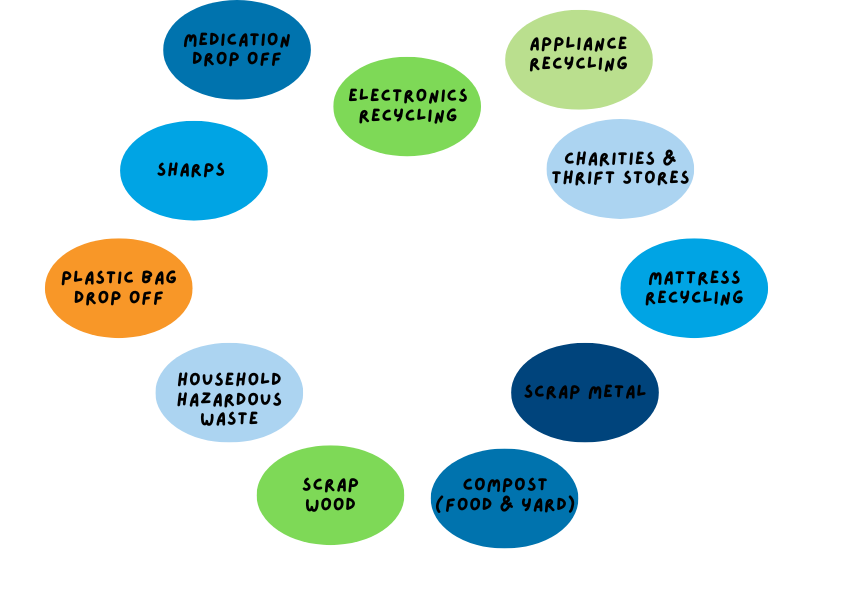
A Little Effort Goes a Long Way
It may take a little extra work to get your items to the right place, but when you do, you support our local economy, extend the life of the landfill, and help our world be more sustainable.
TOOLKIT
Use these tools to be a #BINfluencer and spread recycling education in our community
FACTS TO SHARE
VIDEOS TO SHARE
MEMES TO SHARE
BINFLUENCER FAQs
What Is a #BINfluencer?
-
Being a “BINfluencer” means inspiring others to reduce, reuse, recycle, and rethink their waste to make a positive impact in Sioux Falls and the surrounding communities.
As Sioux Falls grows, managing our waste Is crucial. By diverting waste through reuse, recycling, composting, and other methods, the lifespan of the landfill can be extended, and the need for expensive expansions or development of new landfill sites can be reduced. Supporting local circular economy organizations, such as thrift stores, recyclers, and scrap dealers, also promotes economic growth and job creation in the community. Waste diversion also significantly lowers the environmental impacts of waste. This includes conserving natural resources, reducing greenhouse gas emissions, preventing land and water pollution, and saving energy.
Ultimately, waste diversion efforts contribute to building a more sustainable future for Sioux Falls, ensuring that the community can thrive for years to come.
Where Does Waste Go in Sioux Falls?
In Sioux Falls, waste is picked up from residents by private waste haulers, who bring the trash to the city landfill. Recyclables, on the other hand, are brought to a private Materials Recovery Facility (MRF) for sorting and processing before being sent to manufacturers for reuse. In addition to the regular waste hauler service, the city also runs a yard waste composting program, where compostable materials are brought to the landfill for processing.
Beyond the typical waste and recycling services, there are other programs available for composting and recycling for items that don’t go in your trash, recycling, or compost bins. For example, the city has drop-off sites for electronic waste, household hazardous waste, and sharps. There are also programs for composting food waste and collecting clothing and household items for donation. These programs help divert waste from the landfill and promote more sustainable practices in the community. Learn more about all the programs available “beyond the bin“.
Why Should We Recycle?
Recycling is an essential practice that provides economic, energy, and environmental benefits:
-
- Economy: Recycling helps support the economy by creating jobs and supplying manufacturers with the resources they need. According to the Institute of Scrap Recycling Industries (ISRI), the scrap recycling industry provides over 500,000 jobs in the United States alone! Additionally, recycling supplies approximately 40% of the raw materials needed by manufacturers in the United States. Recycling also saves us money by reducing the amount of waste that gets buried in landfills. Expanding landfills can be costly and often results in negative environmental impacts. By recycling, communities can reduce waste disposal costs and save money.
- Energy: Recycling can help conserve energy and reduce greenhouse gas emissions. Using recycled materials in manufacturing processes requires less energy than using raw materials. For example, producing aluminum from recycled materials uses 95% less energy than producing aluminum from raw materials. Recycling also saves energy by reducing the need to extract, transport, and process new raw materials. Recycling can also help reduce greenhouse gas emissions by preventing the release of methane from landfills. Methane is a potent greenhouse gas that is produced by the decomposition of organic materials in landfills.
- Environment: Recycling helps to conserve natural resources and reduce pollution. When we recycle, we reduce the need to extract new resources from the earth, which can have harmful environmental impacts. For example, mining can lead to deforestation, soil erosion, and water pollution. Recycling can also reduce pollution by preventing waste from being dumped in landfills, which can contaminate soil and groundwater. In the US, recycling saves the equivalent of over 5 billion gallons of gasoline in energy each year. This is equivalent to taking over 9 million cars off the road for a year.
What About Bags?
Bags are not accepted in your mixed recycling bin, and all recyclables should be placed in you bin loose (not bagged). Learn more about how to keep it loose and what else you can do with bags.
Is It Really Against the Law To Not Recycle?
It is mandatory for all residents, businesses, and institutions to recycle. City ordinance requires all generators of solid waste to separate and recycle certain materials, including paper, cardboard, glass, aluminum, and certain types of plastics. Failure to comply with the ordinance may result in a fine or other penalties. However, the city focuses on education and outreach to encourage compliance rather than punitive measures.
How Can I Be a #BINfluencer?
-
- EDUCATE YOURSELF: Learn about the benefits of waste reduction and diversion, and educate yourself on what materials are accepted in recycling, compost, and trash bins.
- LEAD BY EXAMPLE: Incorporate sustainable practices into your daily life and set an example for others to follow. Encourage friends and family to join you in these efforts.
- SPREAD AWARENESS: Share your knowledge and enthusiasm with others by talking to friends and family about the importance of waste reduction and recycling. Use social media to share facts and statistics.
- ENGAGE WITH THE COMMUNITY: Participate in local community events and initiatives that promote waste reduction, reuse, and recycling. Encourage others to join you in making a difference.
- ADVOCATE FOR CHANGE: Speak up to local government officials and business owners. Encourage the implementation of policies and programs that promote waste reduction and ask businesses to participate in reducing waste, reusing, and recycling.
Can I Get a #BINfluencer Tshirt?
Yes! In fact, when you purchase a BINfluencer shirt, a portion of the sales go to support our waste diversion education projects! Youth and Adult sizes are available.
Ordering, payment and production are all managed by the local screenprinting business, Dakota Lettering.
Get yours here: BINfluencer Store
HAVE A QUESTION?
If you have a question on how to properly recycle or dispose of something in Sioux Falls, or if you have an idea on how to be a better #BINfluencer, let us know! We’re here to help!
Be a #BINfluencer
Waste Diversion is one of the simplest, fastest, least expensive, and most impactful strategies available for combating climate change.
Decreasing the demand for natural resources, preventing toxic pollution from incineration and landfilling, and conserving energy are just a few ways that waste diversion supports a stable climate and a healthy, resilient environment.
Learn more about our current sponsor, the original #BINfluencer:
















